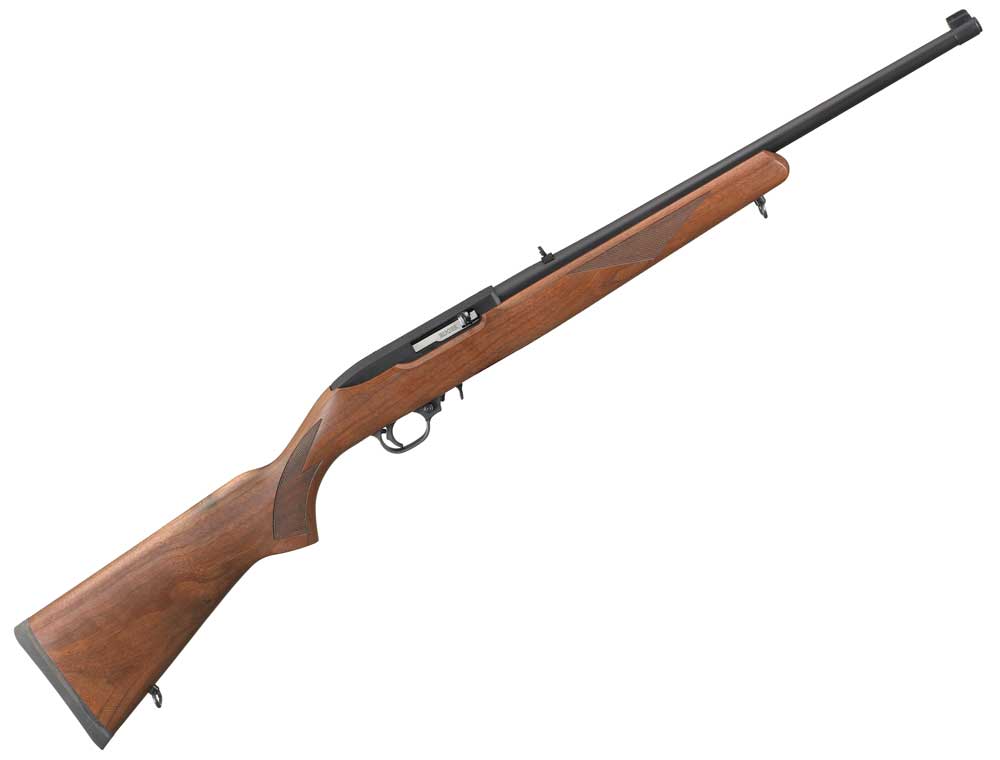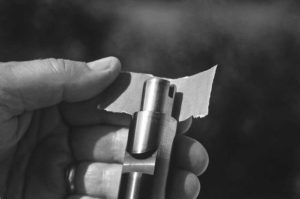

With the receivers of Ruger 10/22 rifles being made of cast aluminum, there can be a considerable amount of variation in dimensions between individuals. As a result, the receiver of one of our rifles will accept barrels that will not even begin to enter the receiver of another.

Some aftermarket barrels are produced with tenons (or shanks) having a diameter that tends toward the maximum allowed, but some receivers may have openings with minimum dimensions. It is also possible that either the barrel extension or the hole in the receiver (or both) may not be perfectly round. As a result, it is not uncommon to find that a particular barrel does not slide easily into the receiver. We have found that this is by no means uncommon; however, it does not indicate a defect in the barrel.
In fact, some manufacturers deliberately make barrel tenons with maximum dimensions so they will need to be polished and individually fitted to receivers. However, do NOT attempt to pull an oversize barrel into the receiver by means of excessive tightening the locking bolts! If you do so, there is a very real probability that the screws will damage the threads in the receiver or strip them altogether. The locking screws provide a secure hold of the barrel to the receiver when they are fully engaged, but they should not be used as the means to pull a tight barrel into the receiver when they are only partially engaged. Pulling an oversized barrel shank into a receiver having a minimum opening could crack the receiver. A damaged receiver could also result from using blows on the barrel to force it into the receiver.
If the barrel extension will not enter the receiver without undue force, you may have to polish it with emery cloth or sandpaper. If you do, make sure to polish it uniformly around the barrel extension to keep it round. Be careful not to remove more metal around the extractor cut at the breech because there is less bearing surface there as the emery cloth is pressed against the barrel. Aftermarket barrels from some sources are accompanied by instructions on how to polish the barrel tenon.
As you polish the barrel tenon, try frequently to fit it into the receiver.
Although the cut for the locking block is across the bottom of the barrel, try inserting the barrel with the cut on top then rotating it in the receiver. In this way, you can determine whether the barrel is equally tight all the way around or whether it is tight only in one orientation. If either the hole in the receiver or the barrel extension is not perfectly round, this will be revealed as you try to rotate the barrel while it is inserted into the receiver.

After you have nearly completed the polishing of the tenon of a blue barrel (you will know this by how tightly the barrel fits), you will need to blue the area that has been polished. Remove any oil from the surface by rubbing it with a small amount of alcohol or other solvent. Apply the bluing solution with a small piece of cloth while observing the cautions and directions given on the container. Achieving uniform bluing will require several applications of the solution. However, after the polished surface area is lightly blued by only one or two applications, insert it in the receiver and rotate it. When you remove it, you will be able to see clearly where contact is excessive because the freshly applied blue will be rubbed off from those areas. You now know where to administer that final bit of polishing to achieve a perfect fit of the barrel to the receiver. When this is complete, finish the bluing process and rinse off any remaining solution and salts. Apply a light coat of oil or other protecting solvent and attach the barrel to the receiver.
Hopefully, the process described above does not sound complicated, because it isn’t. In fact, it may not be necessary at all. Of the many barrels that we have attached to our 10/22 receivers, only three or four have required any fitting. We have also noted that some barrels will slide easily into one receiver but not into a different one. The method of attaching the barrel to the receiver of a Ruger 10/22 allows the fit of the barrel in the receiver to be somewhat sloppy and the rifle to still function perfectly and give good accuracy. The beveled wedge and barrel recess still make for rigid attachment.
Editor's Note : This article is an excerpt from the Gun Digest book Customize the Ruger 10/22.

Next Step: Get your FREE Printable Target Pack
Enhance your shooting precision with our 62 MOA Targets, perfect for rifles and handguns. Crafted in collaboration with Storm Tactical for accuracy and versatility.
Subscribe to the Gun Digest email newsletter and get your downloadable target pack sent straight to your inbox. Stay updated with the latest firearms info in the industry.

![Best Concealed Carry Guns In 2025 [Field Tested] Wilson Combat EDC X9S 1](https://gundigest.com/wp-content/uploads/Wilson-Combat-EDC-X9S-1-324x160.jpg)


![Best 9mm Carbine: Affordable PCCs [Tested] Ruger Carbine Shooting](https://gundigest.com/wp-content/uploads/Ruger-Carbine-Shooting-100x70.jpg)
![Best AR-15: Top Options Available Today [Field Tested] Harrington and Richardson PSA XM177E2 feature](https://gundigest.com/wp-content/uploads/Harrington-and-Richardson-PSA-XM177E2-feature-100x70.jpg)
